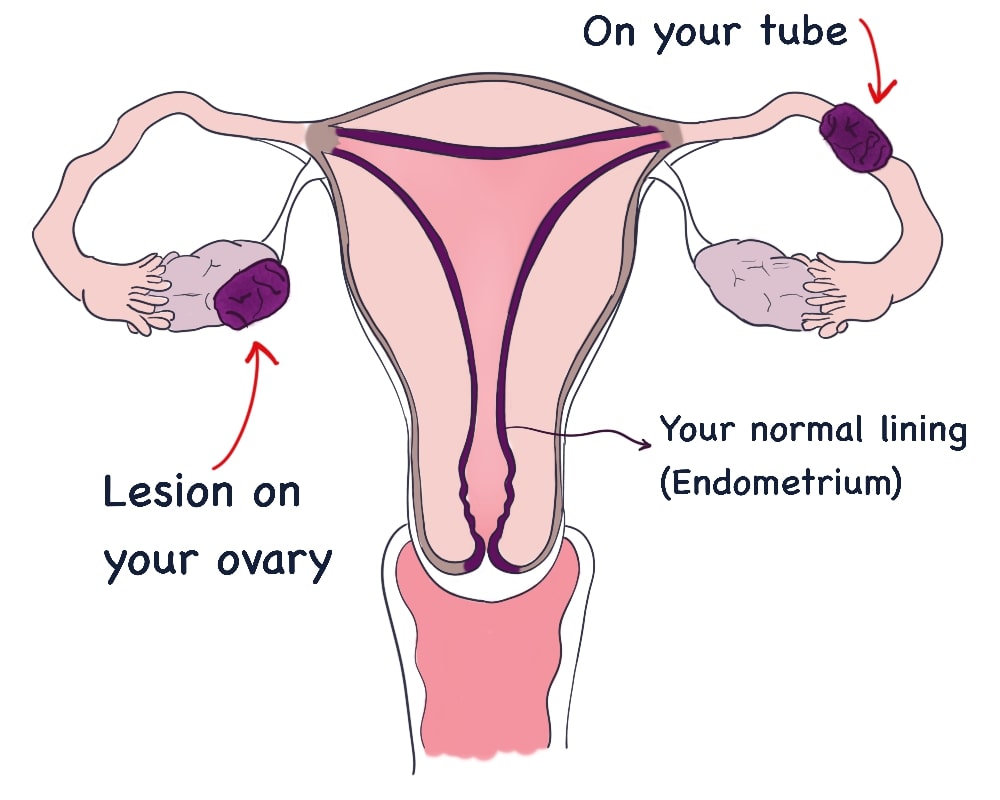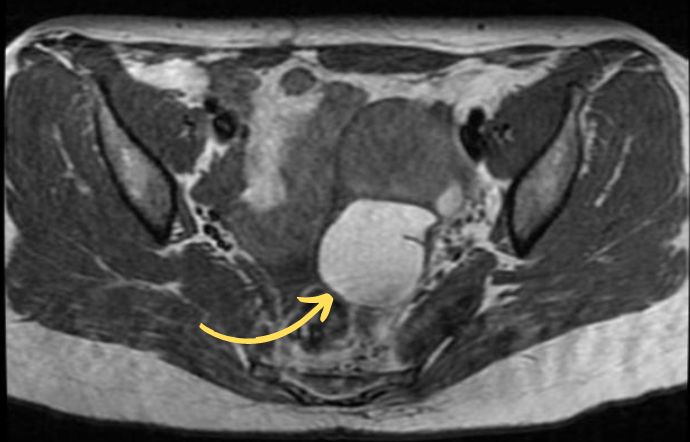Endometriosis affects way more people than you’d think.
If you have severe pain with your periods or can’t manage to get pregnant, you might have endometriosis.
What is Endometriosis?
Endometriosis is a disorder that causes endometrial tissue outside your uterus.
The endometrium is the inner lining of your uterus, and it should only be there. When women ovulate, it gets thicker and swollen, preparing for pregnancy.
Women with endometriosis have some of that tissue in other organs. The most common organs are the ovaries and the fallopian tubes, but it can happen anywhere.

With every period, that tissue will swell and bleed.
When bleeding occurs on your ovaries or tubes, it cannot come out. That blood is trapped inside your body, causing irritation and pain.
Because it irritates your ovaries, it can also cause infertility.
What are the signs of Endometriosis?
1. Pelvic pain
Endometriosis causes severe pain with your period.
While feeling pain and cramps during your period is normal, it shouldn’t be unbearable.
When you have endometriosis, your period hurts too much and you may even faint from the pain.
Some women say it feels like “knives being stabbed.”
It can cause nausea, too.
Remember that pain is not proportional to the size of the lesion. Even small lesions can cause excruciating pain. That’s why some women with a great amount of pain have negative tests (the lesions are too small to be detected).
You may also have pain outside of your period.
2. Pain during sex
Endometriosis can also cause pain during sex.
Sex shouldn’t be painful.
If you feel pain while having sex, don’t consider it normal and seek help.
3. Digestive Issues
In some cases, endometriosis can affect your digestive system if there is a lesion on it, like on your rectum.
In those cases, you can feel discomfort, bloating, or pain when pooping.
You can have either diarrhea or constipation.
4. Lower back pain
Sometimes, pelvic lesions can compress your lower back nerves.
In that case, you’ll feel lower back pain identical to a lumbar hernia.
5. Infertility
Endometriosis is one of the most common causes of infertility in the world.
Not all women with the disease are infertile. Depending on which organs are affected.
If both your ovaries are affected, there are higher chances that you won’t be able to have children.
So, how do you diagnose endometriosis?
Diagnosing endometriosis can be very frustrating. The process usually takes several years from the first symptoms.
This delay happens because finding these lesions on imaging tests is challenging. The only way to be sure is to “take a look inside” directly into your abdomen using a laparoscopy.
· Ultrasound
Ultrasound is the first test to detect endometriosis. It can be either through your tummy or through your vagina.
Transvaginal US is more accurate because it gives us a much better view of your ovaries and other organs.
However, even if the US is negative, that doesn’t mean you are 100% not affected.
Sometimes, the lesions are small and flat, making them difficult to find.
Ultrasound doesn’t distinguish colors, so to find any lesions, they must be shaped like a ball.
· MRI
A pelvic MRI is more accurate. If the US results are unclear, we’ll perform a pelvic MRI.
You’ll have to stay still inside a machine for at least 20 minutes for your pelvic MRI.
MRI can detect lesions with blood inside them like endometriosis lesions have.

Still, in a small number of cases, MRI will also fail. That leads us to the last test.
· Laparoscopy
A laparoscopy consists of getting some thin metal rods inside your abdomen to take a look. It doesn’t require a large incision on your skin, just a few small ones.
They will insert a tiny camera and some tools in case they need to remove a lesion.
A laparoscopy allows us to see inside your abdomen in real time, including your ovaries and tubes. Anything that doesn’t belong there, we’ll detect it and remove it.
Remember
Endometriosis is very common: around 10% of women at a fertile age are affected.
Some of them don’t even know it. Even if they seek help, some doctors will downplay their pain, saying, “That’s normal.” Don’t give up until they take you seriously.
Some additional resources
· About endometriosis: https://medlineplus.gov/ency/article/000915.htm
· How to detect endometriosis: https://www.mayoclinic.org/diseases-conditions/endometriosis/diagnosis-treatment/drc-20354661
Leave a Reply